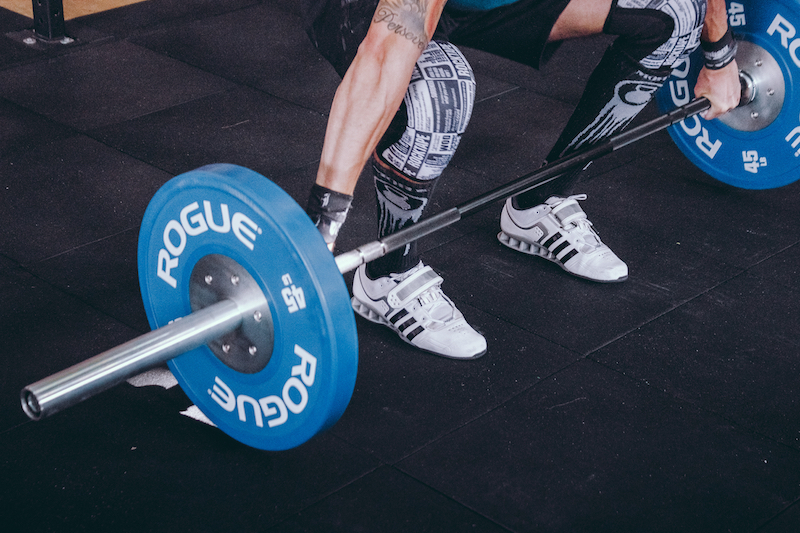You, like so many others who have begun their strength training journeys before you, are trying to get brutally strong.
And like so many of those who start or have been strength training for any amount of time, you have a problem: you’re busy. We all are. Doesn’t matter why, all that matters is that you don’t have the time you need to be able to achieve your goal. Strength is a skill, after all, so to get stronger you need to keep practicing the big compound lifts that recruit the most muscle fibers possible. That means heavy weight, with enough sets and reps to stimulate your nervous system to force such an adaptation.
Or does it?
Enter rest-pause training. Rest-pause training is a density focused style of training that employs heavy loading (70-90% of your 1 rep max) with a short rest interval duration to create as much of a stimulus as possible in minimal time. The result? More strength, more muscle, and improved cardiovascular capability without living in the gym. Less gym time also means more recovery time, and your workout isn’t worth a thing if you don’t recover from it.
Rest-Pause Training Research
A study published in August of 2018 by Brad Schoenfeld in Medicine & Science in Sports & Exercise evaluated the muscular adaptations in low (1 set), moderate (3 sets), and high volume (5 sets) weight lifting regiments across weight-training experienced men.(1) What they found was that, although the high volume groups did gain more muscle, there was no significant difference in strength gains across the 3 groups. To be clear, the low volume group performed only three 13-minute sessions per week over an 8 week period to achieve the same strength progress as the moderate and high volume groups.
[Read out interview with Dr. Brad Schoenfeld on the 3 evidence-based rules of muscle gain.]
Another study published in the Journal of Strength and Conditioning Research in July of 2013 did a similar breakdown of collegiate athlete men and women with no resistance training experience.(2) They examined a low volume group (1 set per exercise, 3 sets per muscle group), a moderate volume group (2 sets per exercise, 6 sets per muscle group), and a high volume group (3 sets per exercise, 9 sets per muscle group). The results? They concluded that while the high volume group was more effective as a strategy to improve strength, it was only marginally so in comparison to the moderate and low volume groups.
Still not convinced? Yet another study published in the Journal of Strength and Conditioning Research in 2017 examined the difference between a rest-pause training protocol and a conventional rest period protocol.(3) The conventional group performed 3 sets of 6 reps at 80% of their 1 rep max with 2-3 minutes rest in-between sets. The rest-pause group performed as many reps as possible in the first set, then with 20 second rest intervals between each subsequent set they performed as many reps as possible in each sub-set until 18 reps were completed. With load and volume equal, there was no significant difference in strength gains between the two groups. The major difference? The rest-pause group cut down on training time while achieving the same results.
Have I solved your “time problem” yet?
Rest-Pause Training Programming
Okay, lets say you’re sold and you want to give rest-pause training a go. You still need a plan, and it needs to make sense in the scheme of your lifestyle. Here are a few options you can apply to your own training when time is short:
1) Take a weight you can perform for at most 5-6 reps (without having to grind). Work up to 2 sets of 5 at 75% of that weight with a minute rest time between those 2 sets. After performing those 2 warm-up sets, perform a set of 5-6 reps at the chosen weight, rest 15-20 seconds, get another 2-3 reps, rest 15-20 seconds, and get one more set of 1-2 reps. Done.
2) Set a timer for 10 minutes, and load up 70-80% of your 1 rep max on your chosen lift. Use a lighter percentage if you’re pretty darn strong, and a higher percentage if you’re not quite advanced yet. Hit as many singles as possible with 15-20 second rest intervals until the timer dings. Record your rep total and beat it next time.
3) Load up your 10 rep max with the intention to perform 20 reps total. Hit a set of 8, rest 15-20 seconds, and then continuously hit as many reps as possible per subsequent set with 15-20 seconds rest in-between until you hit that 20 rep total.
The Downsides
I’ve been talking rest-pause training up like it’s the undiscovered holy grail of gains, but it does have its share of potential downsides that one must consider before you decide to give it a try.
First off, this training technique is brutal. Yeah, it’s potentially a great way to make progress in limited time, but it’s both physically and mentally draining. If you’re not sure you can properly recover from this training style (i.e. sleep and eat enough), you might just be creating a larger recovery deficit than you can handle. Remember, we get better when we recover from training, not from the training itself.
I would also remind you not to be dogmatic about training principles. Even if this works, it might not be the best fit for you long term or perhaps even short term. Everyone reacts to exercises, intensities, volume levels, and frequency differently, so if you try rest-pause and it just doesn’t feel “right”, then don’t do it. Your training should be compatible with you physically and mentally, and it should be sustainable for more than a handful of training sessions. If this doesn’t fit the bill, pat yourself on the back for trying but move on.
The Exercises
Any basic strength training exercise you want. It’s not often recommended for super high skilled weightlifting exercises, like the snatch, that require a lot of coordination and technique that can easily break down from fatigue. But for your regular strength exercises, you can pretty much use it on anything. Seriously, if it’s leg day and you were going to back squat for a 5×5 , or a 4×6, or a 6×3, just replace that scheme with one of the three I listed above. Bench day? Same thing. No 3- to 4-minute rest periods, no wasted time, just gut-busting sets intended to build as much strength as possible in minimal time. That said, you might find this feels better for you on some exercises than others. Personally, I love doing these on front squats and conventional deadlifts. Maybe you like how it feels on the bench but it isn’t stimulating enough when you squat. Just like so much else in training, take the time to see what works for you and you’ll be better off for it.
There it is, rest-pause training in all its glory. If you’re looking for a way to fit productive strength sessions into your limited schedule, or are just looking for something fresh to jump-start your training, give it a try.
References
1. Schoenfeld, B.J., et al. Resistance training volume enhances muscle hypertrophy but not strength in trained men. Med Sci Sports Exerc. 2018 Aug 28.
2. Naclerio, Fernando, et al. Effects of different resistance training volumes on strength and power in team sport athletes. Journal of Strength and Conditioning Research: July 2013 – Volume 27 – Issue 7 – p 1832–1840.
3. Prestes J, et al. Strength and muscular adaptations following 6 weeks of rest-pause versus traditional multiple-sets resistance training in trained subjects. J Strength Cond Res. 2017 Apr 4



